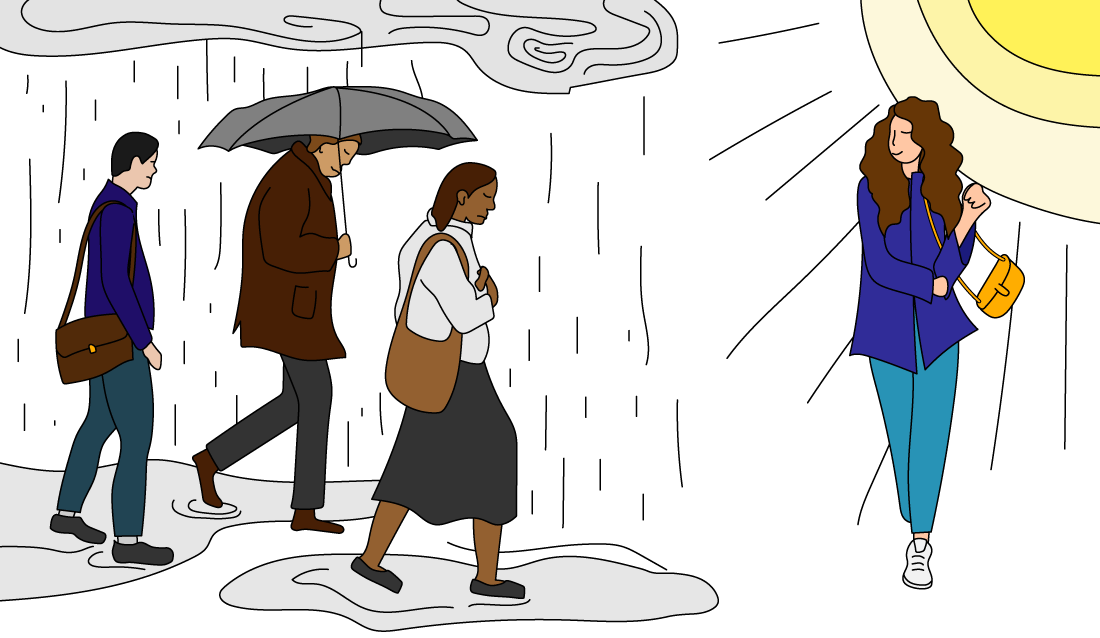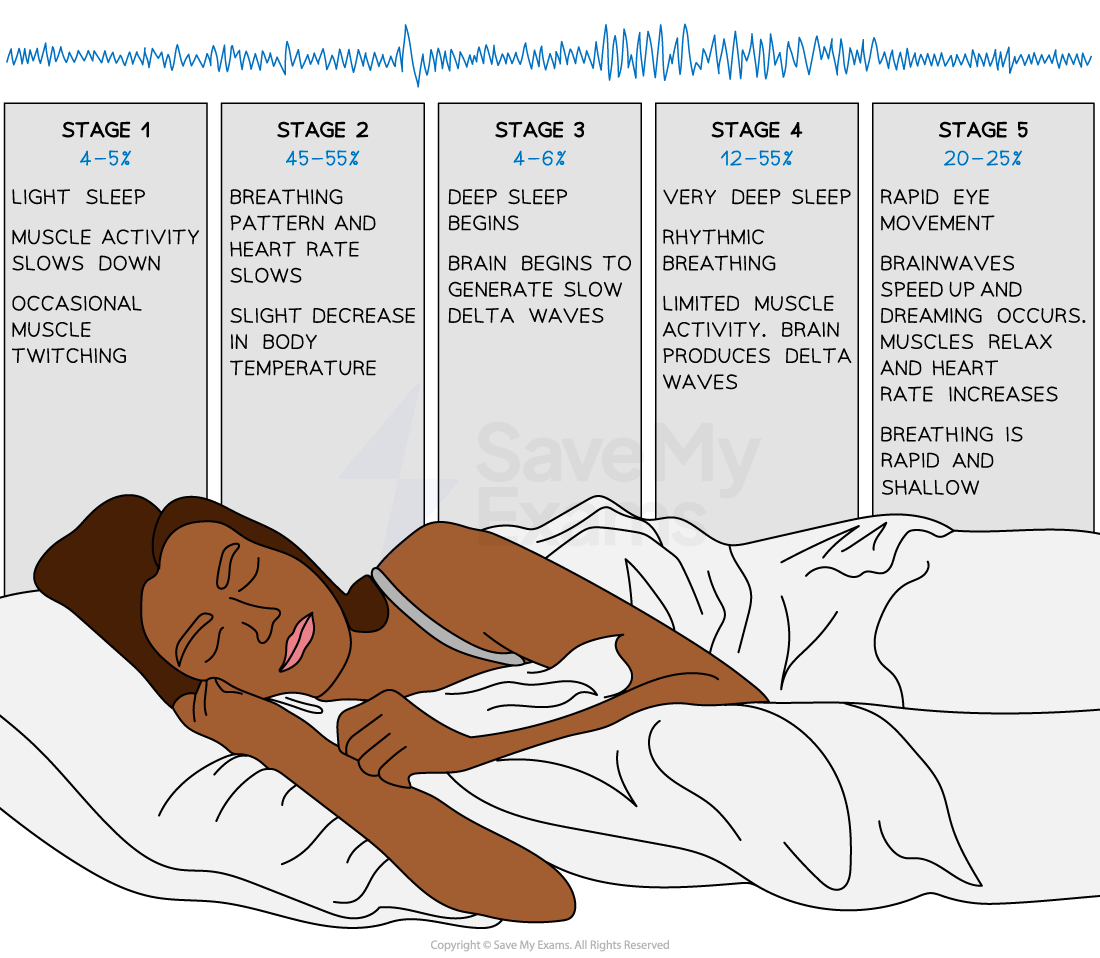Circadian Rhythms
- Circadian rhythms (aka the ‘body clock’) operate on a 24-hour cycle which is reset by levels of light
- The sleep-wake cycle is an example of a circadian rhythm
- Humans and animals will sleep or wake according to this cycle, dependent on the amount of light (an exogenous zeitgeber) they are exposed to
- Endogenous zeitgebers are environmental events, like the changing of light, which reset the body clock
- The suprachiasmatic nuclei (SCN) in the hypothalamus detects the level of light present and then uses this information to coordinate the activity of the entire circadian system
- Melatonin plays a role in ‘triggering’ sleep by responding to a decrease in the levels of light
- Shift work has been found to lead to desynchronisation of circadias rhythms and can lead to adverse cognitive and physiological effects
- For example, memory lapses or issues with fertility
- Jet lag is another example that can lead to desynchronisation of circadian rhythms
Exam Tip
Whilst jet lag is another common example used, shift work as an issue for the body clock is worth considering as it may be easier to explain as it avoids the issue of time zones and movement east to West and vice versa.

Circadian rhythms determine our sleep-wake cycle
Supporting research:
- Siffre (1973) – a case study in which Siffre spent two months in a cave deprived of light and sound, determining that his circadian rhythm remained between 24-25 hours
- Folkard et al. (1980) implemented a 22-hour sleep-wake cycle and found that participants experienced problems with recall in their short-term memory

Siffre (1973) during his cave study research
Critique:
- Case studies such as Siffre (1973) cannot be generalised beyond the single participant
- Folkard et al.’s (1980) research lacks ecological validity due to its lab setting
Exam Tip
Terminology is a key issue with the topic of Biorhythms: you will notice that there are a lot of quite technical terms e.g. suprachiasmatic nuclei, and exogenous zeitgebers, which you need to be familiar with and confident in using in exam responses. Make sure that you have learned these terms properly – a useful way of doing this is to have these terms pinned up around your house/room to help you familiarise yourself with them.
Link to Approaches:
- This topic sits within the biological approach which assumes that human behaviour can be explained in terms of internal physiological functions such as the activation of the pineal gland in the sleep-wake cycle linked to hormones such as melatonin
- However, human behaviour does not always fit neatly into a biological explanation, for example some people will not necessarily respond to a pre-determined sleep-wake cycle which means that the biological approach cannot always account for individual differences




